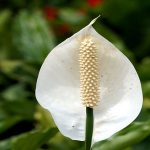Yes, jade plants are beneficial for your home garden as they are easy to care for and have various positive qualities. Jade plants, also known as Crassula ovata, are a popular choice for home gardens due to their low maintenance requirements and appealing aesthetics.
These succulent plants feature thick, oval-shaped leaves that store water, making them drought tolerant and resilient. With their succulent nature and ability to thrive in various lighting conditions, jade plants are adaptable and can be grown both indoors and outdoors.
Furthermore, jade plants are believed to bring good luck and positive energy, making them a popular choice for indoor decor. Whether you are a novice gardener or simply looking to enhance your garden’s beauty, adding a jade plant can be a great choice.
Benefits Of Jade Plant In Your Home Garden
Jade plants offer numerous benefits for your home garden. With their beautiful appearance, easy maintenance, and air-purifying qualities, they are a great addition to any indoor or outdoor space, bringing a sense of calm and tranquility.
The jade plant, also known as Crassula ovata, is a popular succulent that offers numerous benefits when grown in your home garden. From air purification to low maintenance and being a good luck attractor, this resilient plant is a versatile addition to any garden.
Air Purification
Jade plants are more than just eye-catching succulents; they also serve as natural air purifiers. These plants have the ability to remove harmful toxins from the air, such as formaldehyde and benzene, thereby improving the air quality in your home garden. With a jade plant, you can enjoy not only the aesthetic appeal of lush greenery but also the added benefit of cleaner, healthier air.
Low Maintenance
One of the main reasons why jade plants are a popular choice for home gardens is their low maintenance requirements. Once established, these plants can thrive even in adverse conditions, making them perfect for busy homeowners or those who lack a green thumb. Jade plants are highly drought-tolerant and only require occasional watering. They can adapt to a variety of light conditions, although they prefer bright, indirect sunlight. Additionally, these plants are known for their ability to store water in their thick leaves, allowing them to withstand periods of drought.
Good Luck Attractor
If you believe in the power of Feng Shui, then adding a jade plant to your home garden is a must. According to this ancient Chinese practice, jade plants are considered good luck attractors. It is believed that these plants bring wealth, prosperity, and positive energy to their surroundings. Placing a jade plant near the entrance of your home or in the wealth corner of your garden is said to enhance these positive qualities. Not only will you enjoy the beauty of this plant, but you may also benefit from its reputed good luck charm.
To summarize, jade plants offer a range of benefits in your home garden. They not only purify the air, but they are also low maintenance and are believed to attract good luck. With their enchanting appearance and versatility, jade plants are an excellent choice for any garden enthusiast. Start reaping the rewards of this remarkable plant by adding a jade plant to your home garden today!
Growing And Caring For Jade Plant
Jade plants are not only beautiful additions to your home garden but they also bring good fortune and prosperity. With their thick, lush leaves and sturdy branches, these succulents are known for their easy-care nature. In this post, we will explore the ins and outs of growing and caring for jade plants, including choosing the right location, proper watering techniques, and fertilizing tips.
Choosing The Right Location
When it comes to growing jade plants, selecting the right location is crucial. These desert natives thrive in bright, indirect sunlight, so it’s essential to find a spot in your garden that offers ample light without exposing them to harsh, direct rays. Placing your jade plant near a south-facing window or in a well-lit area of your garden will provide it with the optimal light conditions it needs to flourish.
Proper Watering
Watering your jade plant correctly is vital to its overall health. These succulents store water in their fleshy leaves, making them more drought-tolerant than other plants. It’s important to allow the soil to dry out almost completely between waterings. Overwatering can lead to root rot, which can be detrimental to your jade plant’s survival.
Here’s a simple watering technique for your jade plant:
- Check the top inch of the soil with your finger.
- If it feels dry, it’s time to water your jade plant.
- Water the plant thoroughly but ensure that the excess water drains completely.
- Wait until the soil is completely dry before watering again.
Fertilizing Tips
While jade plants are relatively low-maintenance, occasional fertilizing can promote healthy growth and vibrant foliage. A balanced, water-soluble fertilizer designed for succulents is ideal. Here are some fertilizing tips to keep in mind:
- Fertilize your jade plant during the growing season, which typically spans from spring to summer.
- Follow the instructions on the fertilizer package for the correct dosage and frequency.
- Apply the fertilizer to the soil around the base of the plant, taking care to avoid direct contact with the leaves.
- After fertilizing, water the plant lightly to ensure the nutrients are absorbed properly.
With these helpful tips, you can ensure that your jade plants thrive in your home garden. By choosing the right location, providing the correct amount of water, and incorporating proper fertilizing practices, you’ll be rewarded with a beautiful, healthy jade plant that will bring joy to your space for years to come.
Common Issues And Troubleshooting
Pest Problems
Jade plants are generally hardy and resistant to most pests. However, they can still be susceptible to a few common pests. Here are some pest problems that you may encounter with your jade plant:
- Mealybugs: These tiny white insects can cluster around the leaves and stems of your jade plant, causing damage and sucking sap. To get rid of mealybugs, wipe the affected areas with a cotton swab dipped in rubbing alcohol.
- Aphids: These small insects can infest your jade plant and cause leaf distortion and stunted growth. You can control aphids by spraying the affected plant with a mixture of water and dish soap.
- Spider mites: These microscopic pests can spin webs and cause yellowing leaves on your jade plant. Regularly misting the plant with water can help deter spider mites. If the infestation is severe, consider using insecticidal soap to control the problem.
Disease Prevention
To keep your jade plant healthy and disease-free, it’s important to follow good prevention practices. Here are a few tips to help prevent diseases in your jade plant:
- Provide proper drainage: Ensure your jade plant is potted in well-draining soil to prevent root rot and other fungal diseases.
- Avoid overwatering: Only water your jade plant when the soil is dry to the touch. Excess moisture can lead to fungal growth.
- Sanitize tools: When pruning or propagating your jade plant, make sure to clean and sanitize your tools to prevent the spread of diseases.
Pruning And Propagation
Regular pruning and propagation can help your jade plant stay healthy and promote growth. Here are some key points to keep in mind:
- Pruning: Prune your jade plant to remove dead or damaged branches and to shape the plant. Use clean, sharp scissors or pruning shears to make clean cuts just above a leaf node.
- Propagation: Jade plants are easy to propagate through stem or leaf cuttings. Simply cut a healthy stem or leaf, let it dry for a few days, and then plant it in well-draining soil. Keep the soil moist but not overly wet until new growth appears.
Interesting Facts And Varieties Of Jade Plant
The Jade Plant, also known as Crassula ovata, is a popular houseplant that is not only aesthetically pleasing but also brings good luck and positive energy. This succulent plant is native to South Africa and Mozambique and belongs to the Crassulaceae family. It is well-loved by garden enthusiasts and beginners alike due to its low maintenance and ability to thrive in various conditions.
Jade Plant Symbolism
The Jade Plant is widely regarded as a symbol of prosperity, good fortune, and wealth. Its round, coin-shaped leaves are believed to attract money and financial success, making it a common feature in homes and businesses. Its vibrant green color is reminiscent of growth and renewal, bringing a sense of harmony and balance into any space. Additionally, the Jade Plant is also associated with longevity and love, making it a meaningful gift for loved ones.
Different Types Of Jade Plant
The Jade Plant has several interesting varieties, each with its own unique features and growth habits. Let’s explore some of the most popular types:
| Variety | Description |
|---|---|
| Crassula ovata ‘Hobbit’ | This variety has elongated, tubular leaves that curl inward and have red tips. It has a distinctive appearance, resembling the mythical creature it is named after. |
| Crassula ovata ‘Gollum’ | Named after another fictional character, the ‘Gollum’ Jade Plant has tubular leaves that are more elongated and have a reddish tint. It has a more compact growth habit compared to other varieties. |
| Crassula ovata ‘Tricolor’ | This variety stands out with its variegated foliage, featuring cream and pink edges. The leaves are also smaller and more compact, giving it a delicate and charming appearance. |
These are just a few examples of the diverse range of Jade Plant varieties available. Each one brings its own unique charm and visual appeal to your garden or indoor space.
Incorporating a Jade Plant into your home garden not only adds beauty to your surroundings but also enhances positive energy and prosperity. Its symbolism and various varieties make it a versatile and delightful addition to any plant collection.
Frequently Asked Questions For Are Jade Plant Good For Your Home Garden?
Are Jade Plants Easy To Care For?
Jade plants are known for their low maintenance nature. They thrive in bright, indirect light and require infrequent watering. With proper care, these plants can live for many years, making them an ideal choice for home gardens.
Do Jade Plants Need A Lot Of Sunlight?
While jade plants prefer bright, indirect light, they can tolerate lower light conditions. However, to ensure healthy growth and vibrant foliage, it is best to place your jade plant in a location that receives at least four hours of sunlight per day.
Can Jade Plants Survive In Low Humidity?
Jade plants are highly adaptable and can tolerate low humidity environments. However, to prevent leaf drop and maintain optimal health, it is recommended to occasionally mist the leaves or place the plant near a humidifier, especially during dry winter months.
Conclusion
Adding jade plants to your home garden can be a smart and visually appealing choice. With their low-maintenance nature and unique aesthetics, jade plants bring a touch of nature into your living space. These plants not only enhance the overall decor but also offer various benefits, such as improving indoor air quality.
So why not consider adding a jade plant to your home garden today and enjoy the beauty and positive effects it brings to your surroundings?

